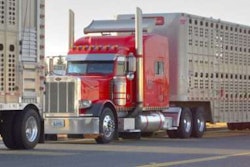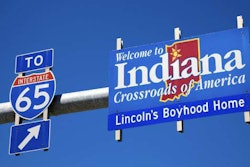
Truckers have gained some flexibility in order to find safe parking when their hours of service are exhausted by a shipper/receiver or off-duty periods are interrupted by law enforcement.
Effective immediately, the Federal Motor Carrier Safety Administration will allow drivers to enter into personal conveyance status, whether the truck is loaded or not, to find the nearest safe parking or rest location in such situations. The change, which was announced Thursday, was prompted by more rigid hours of service compliance brought on by the agency’s electronic logging device mandate.
See FMCSA’s document regarding personal conveyance changes.
“The movement from a shipper or receiver to the nearest safe resting area may be identified as personal conveyance,” according to a notice from FMCSA, “regardless of whether the driver exhausted his or her hours of service, as long as the CMV is being moved solely to enable the driver to obtain the required rest at a safe location.”
FMCSA Enforcement and Compliance Director Joe DeLorenzo Thursday emphasized a key point that might apply more broadly to other scenarios where personal conveyance for the purpose of getting “to your safe place to rest. It’s all about why you’re making that particular movement,” in the end.
Generally, personal conveyance use has not been allowed for any move intended to further the direction of the current or next dispatch and is intended as truly personal use of the truck, outside the stream of commerce. Further clarifying the change in personal conveyance interpretation, the agency said it recognized “the driver may not be aware of the direction of the next dispatch and that in some instances the nearest safe resting location may be in the direction of that dispatch. If the driver proceeds to the nearest reasonable and safe location and takes the required rest, this would qualify as personal conveyance.”
Any driver using personal conveyance this way is advised to “annotate on the log if he/she cannot park at the nearest location and must proceed to another location.”
Personal conveyance is also newly specifically allowed in other similar circumstances, the agency noted — when a safety official (such as a law enforcement officer) requires a driver to move during an off-duty period. Such a use should be “no farther than the nearest reasonable and safe area to complete the rest period.”
Travel to home after working “offsite,” as long as the driver’s home is not in the direction of the current or next dispatch, is also allowed as personal conveyance by the new guidance.
Guidance changes will soon be published in the Federal Register, but the agency has already rolled them out to law enforcement.









